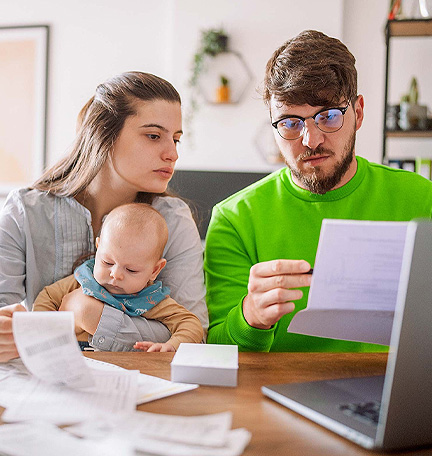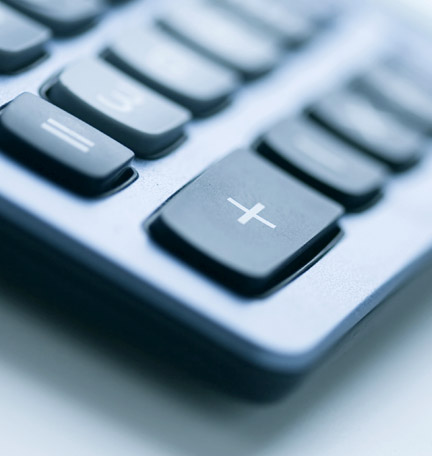How to Protect Yourself When Selling Online
Learn how to stay safe from scammers while selling items online.
Whether it’s a used couch you no longer need, a brand-new pair of shoes that just don’t fit, or an antique you no longer have room for, nearly everything has a place online where it can be sold. And while it might be appealing to sell unwanted items from the comfort of your home, it may also make you more vulnerable to scams.
Whether you’re selling online through eBay, Etsy, or Poshmark, or meeting a buyer face-to-face via Craigslist or Facebook Marketplace, it’s important to know how to protect yourself. Here are a few of the more common scams targeting sellers, plus tips for how to protect yourself.
Understanding the Most Common Scams
Imagine this: You’re selling an item via Craigslist, and an interested buyer contacts you saying they’re out of town, but will mail you a check and arrange to pick up the item at a later date. When the payment arrives, you realize it’s made out for an amount higher than necessary. The buyer asks you to deposit the check and wire the extra funds back to them. Unfortunately, about a week or two later, your bank notifies you that the check was bad.
In these situations, the scammer uses the lag time between the check clearing in your account and the bank catching the fraudulent check to disappear. The scammer walks away with the money you wired them, while you, the seller, have little recourse for recovering those funds.
Another common scheme may occur if you are shipping an item internationally to a location where mail tracking is unavailable. In this scam, the buyer claims the item was never delivered and initiates a dispute. On most online marketplaces, the burden is on the seller to prove that the item was shipped as promised. In instances where tracking isn’t available, the platform will often side with the buyer, and you’ll be out the money and the item.
How to Protect Yourself When Selling Online
Although scammers are becoming more sophisticated in their schemes, there are many ways you can protect yourself and your wallet. When selling online, use these tips to stay safe:
1. Protect your personal information
When dealing with strangers online, it’s crucial that you keep your personal information personal. Never share your account information or exact location with a potential buyer. If a potential buyer is asking for unnecessary personal information, they’re likely up to no good.
2. Limit communication channels
Many websites or apps allow buyers and sellers to communicate on-platform, and it’s best to limit your communication to that channel. In fact, many sites recommend that sellers communicate exclusively through their platform. If you need to exchange phone numbers for picking up an item in person, consider using a Google Voice number so that you can cut ties after the transaction is complete.
3. When selling locally, stick to in-person transactions
According to Craigslist, you can avoid 99% of scams by selling to buyers in your area, face-to-face. Sticking to cash transactions and in-person hand offs can eliminate some payment scam risk, but you should still take certain precautions. If possible, choose a public meeting place — even in front of a police station — and ask a family member or friend to accompany you. If your item is too large to take to a public place, try to move it into your garage or in front of your home, and always schedule meetups for daylight hours.
4. Only accept payment through approved methods
Most sites recommend, or even require, certain payment methods to protect both buyers and sellers. If you’re using Craigslist, Amazon, or eBay, ask that the buyer pays through the website’s recommended channel. Do not accept personal checks, cashier’s checks, wire transfers or money orders. If a buyer insists on these payment methods, they may be planning a scam.
5. Take extra caution with shipping
If you have to ship an item to a buyer, you’ll need to take extra precautions. First, never ship to an address that’s not associated with the buyer’s profile. If you send to a non-approved address, the buyer may claim they never received the package — and it may be harder to trace. When shipping, always use tracked postage methods, and keep the tracking number for your records. That way, if they claim the package wasn’t delivered, you can check the tracking status or contact the postal service or carrier directly.
6. Take advantage of seller protections and guidelines
If the site offers seller protections, make sure you’re using them. Further, don’t stray from the site’s usual processes or payment methods — many sites require you to adhere to these guidelines in order to receive protection.
If you’ve encountered a scam while selling online, report it to the Federal Trade Commission at reportfraud.ftc.gov. For more tips on protecting yourself against financial scams on and offline, visit regions.com/fraudprevention.






